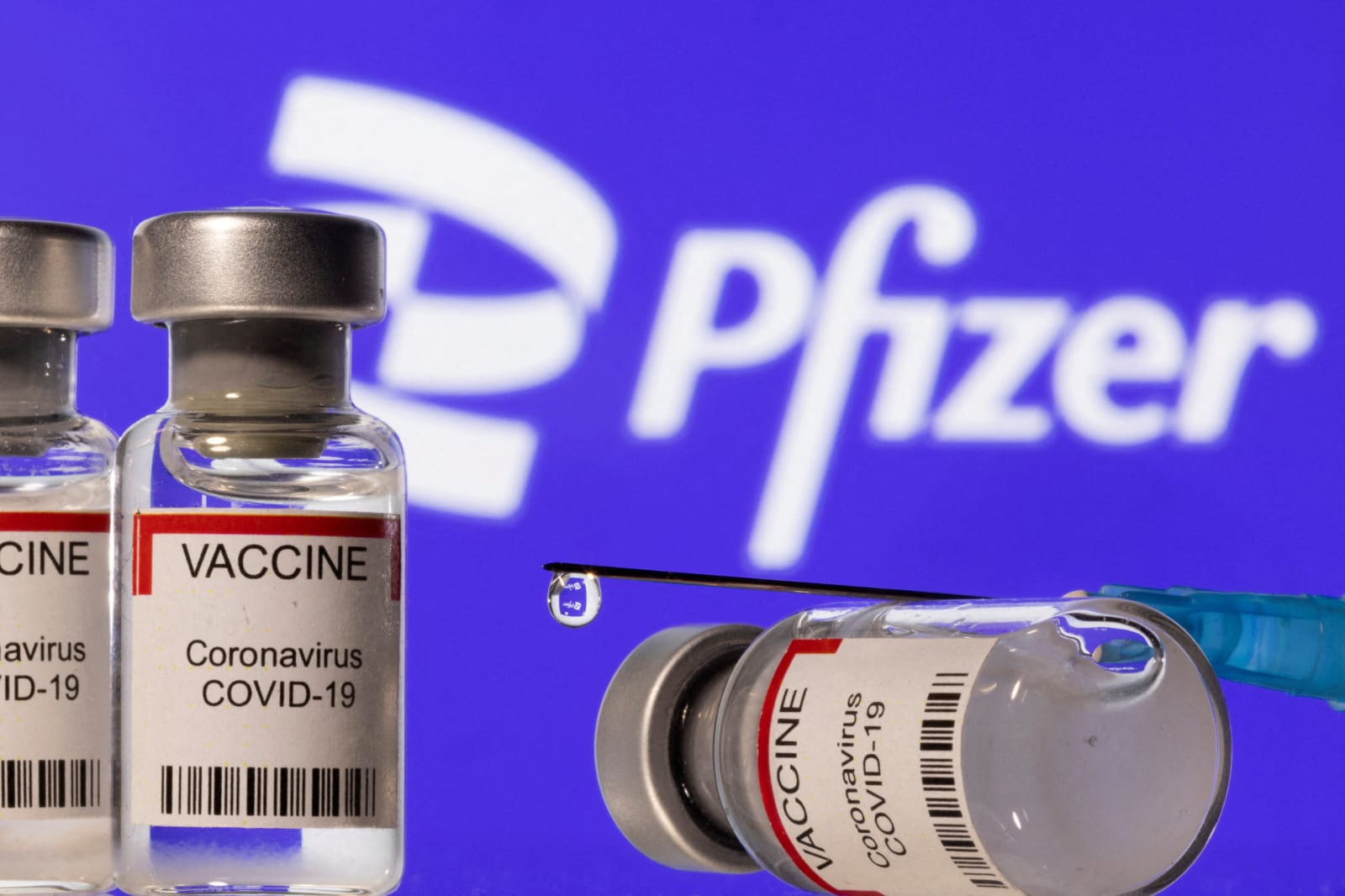Introduction
Pfizer Inc. stands as one of the world’s most recognized biopharma companies. With headquarters in New York, Pfizer has become known globally for developing innovative medicines and vaccines that address major health challenges. Over its long history, Pfizer has delivered breakthrough products such as the COVID‑19 vaccine (in collaboration with BioNTech) and blockbuster therapies in cardiology, endocrinology, and oncology. In the post‑pandemic era, Pfizer is reconfiguring its focus: it must balance legacy drugs nearing patent cliffs, expand its pipeline, and invest in new therapeutic areas. This article examines Pfizer’s current health strategies, product offerings, future ambitions, and competitive contrasts. We’ll also include helpful tables and FAQs to boost understanding and readability. Whether you’re a healthcare professional, investor, or curious reader, this article gives a clear, SEO-optimized insight into Pfizer’s direction in 2025 and beyond.
Pfizer’s Core Business & Strategic Focus
Pfizer operates across multiple therapeutic areas, but the company has prioritized six core pillars to sharpen its R&D investment and commercial efforts: Anti‑infectives, Inflammation & Immunology, Internal Medicine, Oncology, Rare Diseases, and Vaccines. DrugPatentWatch+2Pfizer+2 By concentrating on these domains, Pfizer seeks to allocate capital more efficiently and drive deeper scientific competence in each area. In recent years, the company has expanded its “Accord for a Healthier World,” which makes selected medicines and vaccines available on a not‑for‑profit basis in lower‑income countries. insights.pfizer.com At the same time, Pfizer continues to negotiate licensing, acquisition, and collaboration deals to fortify its pipeline—especially in oncology (e.g. its Seagen acquisition) and anti‑infectives. pfizerpro.co.uk+2Pharmaceutical Technology+2 The strategic focus helps Pfizer navigate its “patent cliff” challenges by shifting the company into high unmet‑need areas.
Current Product Portfolio & Pipeline Highlights
Pfizer maintains a broad commercial product portfolio while actively developing novel candidates in its pipeline. Its marketed products span vaccines (COVID vaccines, pneumococcal conjugate vaccines), internal medicine (e.g., Eliquis, Xeljanz), oncology (e.g. Ibrance, Xtandi via partnership), and rare disease/hematology. Investing.com India+2DrugPatentWatch+2 Meanwhile, in its investigational pipeline, Pfizer lists several promising candidates: Abrysvo (pediatric RSV vaccine), PF‑07220060 / atirmociclib (CDK4 inhibitor in breast cancer), danuglipron (oral GLP‑1 for weight management; though development was discontinued) and biologics like Dekavil, felmetatug vedotin, etc. Pfizer+2Finviz+2 Pfizer also holds maplirpacept (an immune checkpoint fusion protein) for hematologic malignancies. Wikipedia The pipeline reveals a strong tilt toward oncology, immunomodulation, and anti‑infective/vaccine development.
Contrast: Legacy Drugs vs. Next‑Generation Focus
Below is a comparison of Pfizer’s legacy (mature) drugs vs. next‑gen pipeline or future assets:
| Dimension | Legacy / Mature Products | Next‑Generation / Pipeline Assets |
|---|---|---|
| Revenue stability | Provide steady cash flows (e.g. Eliquis, Ibrance) | Still uncertain; must pass trials and gain approvals |
| Patent life | Many face upcoming patent expiration (2025–2028) | New molecules start fresh 20‑year clock |
| Competitive pressure | Generic entry and biosimilars threaten margins | Competition is high but premium pricing possible |
| Innovation | Limited incremental innovation | High upside if new classes (e.g. anti‑obesity pills, novel oncology) succeed |
| Risk profile | Lower regulatory risk (already approved) | High clinical risk, but also high reward |
Because several blockbuster drugs are approaching patent expiry, Pfizer’s strategy increasingly depends on replacing that revenue base with fresh, higher-risk but potentially high-reward assets.
Current & Near-Term Health Strategies
Pfizer’s strategic roadmap in current and near‑term years centers on the following pillars:
- Oncology & ADCs (Antibody-Drug Conjugates): Through its Seagen acquisition, Pfizer has boosted its ADC capabilities and now expects to build a multi‑billion dollar oncology franchise. DrugPatentWatch+3pfizerpro.co.uk+3Finviz+3
- Vaccines & Anti‑infectives: Beyond COVID, Pfizer is developing RSV vaccines, a combined mRNA flu/COVID shot, and novel antivirals (e.g. ibuzatrelvir for COVID) in Phase 3 trials. Finviz+2Wikipedia+2
- Metabolic / Weight Management: Pfizer attempted to enter the oral GLP‑1 space via danuglipron, though that program was terminated after liver safety concerns. Reuters+2AP News+2 The company is now acquiring biotech Metsera (for ~US$7.3B) to access obesity drug programs. The Wall Street Journal+2Reuters+2
- Collaborations & Licensing: Pfizer inked a global licensing deal (excluding China) for the cancer drug candidate SSGJ‑707 from 3SBio, paying ~$1.25B upfront. Reuters+1
- Access & Global Health Initiatives: Via the “Accord for a Healthier World,” Pfizer commits to making certain medicines and vaccines available at not‑for‑profit pricing in lower-income countries. insights.pfizer.com+1
These strategies reflect a dual need to defend near-term cash flows and invest aggressively for the future.
Future Vision & Aspirational Moves
Looking ahead, Pfizer aims to evolve in several bold directions:
- Blockbuster Growth Target: Pfizer expects to have “eight or more blockbuster oncology medicines” by 2030. Finviz+1
- Anti‑obesity and Metabolic Franchise: With the Metsera acquisition, Pfizer intends to accelerate oral and injectable obesity drug development. AP News+3The Wall Street Journal+3Reuters+3
- mRNA & Combination Vaccines: Pfizer is exploring next-generation mRNA vaccines combining flu and COVID or targeting other infectious diseases. Finviz+1
- Precision & AI‑Driven R&D: Pfizer is investing in AI and computational methods to accelerate drug discovery and optimize clinical trials (reflecting industry trends). arXiv
- Global Access & Sustainability: Continued expansion of its not‑for-profit pricing model in low-income nations, bolstering health infrastructure and partnerships. pfizer.com.pk+1
Pfizer’s ambition is clear: transition from its COVID-driven revenue base to a diversified, high-impact biotech innovator with deep roots in oncology, vaccines, and metabolic health.
Risks, Challenges & Mitigation
No strategy is without risk. Pfizer faces:
- Patent Cliffs & Revenue Erosion: Large revenues from drugs like Eliquis, Ibrance, etc., will lose exclusivity in 2025–2028, inviting generics. Reddit+2Investing.com India+2
- Clinical Failure Rate: Many pipeline assets may fail at various stages, particularly in metabolic or novel mechanisms.
- Regulatory & Safety Hurdles: The cessation of danuglipron development underscores the risk of safety setbacks. Reuters+1
- Competition: Rivals like Novo Nordisk and Eli Lilly dominate obesity/GLP‑1 markets; in oncology, many competitors are aggressive.
- Execution & Integration Risk: Mergers, acquisitions, and licensing deals must be executed well to yield synergies.
To mitigate these risks, Pfizer is diversifying its pipeline, forming external collaborations, and prioritizing high-probability assets to balance high-risk bets.
FAQs (Frequently Asked Questions)
Q1: What is Pfizer’s flagship product?
One of Pfizer’s most recognized recent products is its COVID‑19 vaccine (in partnership with BioNTech). Beyond that, long-standing “blockbuster” drugs include Eliquis (anticoagulant) and Ibrance (breast cancer).
Q2: Why did Pfizer stop developing danuglipron?
Pfizer discontinued danuglipron after a trial participant showed signs of drug-induced liver injury, despite resolving afterward. The safety concern led to halting the program. Reuters+1
Q3: What is Pfizer’s strategy in obesity and weight management?
After halting its internal obesity pill, Pfizer is acquiring Metsera to access a pipeline in anti‑obesity drugs (oral and injectable) and compete in that fast-growing space. The Wall Street Journal+2Reuters+2
Q4: How strong is Pfizer in oncology?
Pfizer is pushing hard in oncology—especially via ADCs after acquiring Seagen. Its pipeline includes many oncology assets and aims for multiple regulatory approvals by 2025. pfizerpro.co.uk+2Pharmaceutical Technology+2
Q5: What role does Pfizer play in global health / access?
Through its “Accord for a Healthier World,” Pfizer pledges to provide many medicines and vaccines at not‑for‑profit pricing in ~45 lower-income countries, including off-patent and new products. insights.pfizer.com+1
Q6: What is ibuzatrelvir?
Ibuzatrelvir is an investigational oral antiviral (a SARS‑CoV‑2 protease inhibitor) currently in Phase 3 clinical trials. If approved, it could provide a simplified treatment for COVID‑19. Wikipedia
Q7: What are the biggest risks for Pfizer?
Major risks include patent expirations (leading to generic competition), clinical trial failures, regulatory safety setbacks, and stiff competition in key areas.
Q8: How will Pfizer generate growth post-2025?
Pfizer plans to lean on new assets (especially in oncology, obesity, vaccines), acquisitions/licensing deals (e.g. Metsera, 3SBio), improved R&D productivity, and global access expansion.


